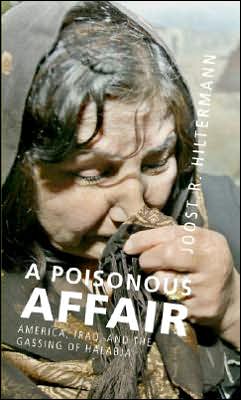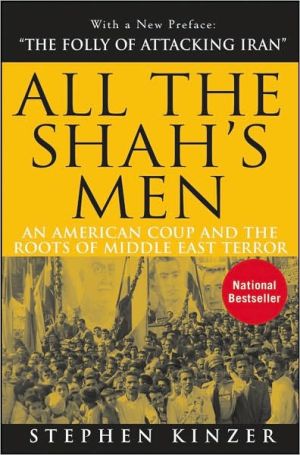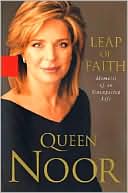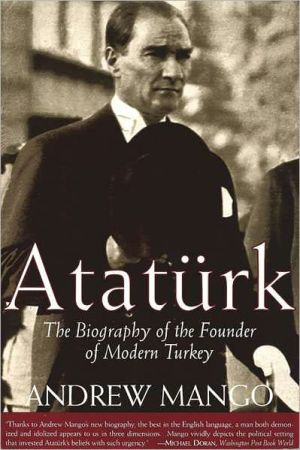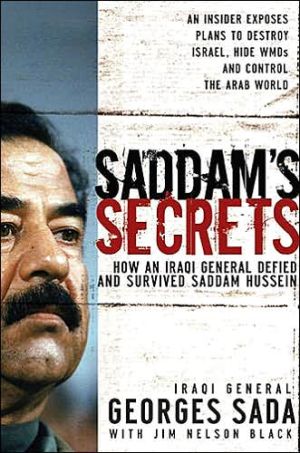Poisonous Affair: America, Iraq, and the Gassing of Halabja
In March 1988, during the Iran-Iraq war, thousands were killed in a chemical attack on a town in Iraqi Kurdistan. Both sides accused the other. Gradually it emerged that Saddam Hussein, with the tacit support of his western allies, was responsible. This book tells the story of the gassing of Halabja, and how Iraq amassed chemical weapons to target Iranian soldiers and Kurdish villagers as America looked the other way. Today, as the Middle East sinks further into turmoil, these policies are...
Search in google:
How America stood by and allowed Saddam's Iraq to amass chemical weapons during the Iran-Iraq war. The Washington Post - Fawaz A. Gerges Hiltermann's A Poisonous Affair is a chilling account of the gassing of Halabja, a village in Iraq's Kurdish region, in March 1988 and the subsequent counterinsurgency campaign known as Anfal ("The Spoils"), in which some 80,000 Kurdish civilians were driven from their homes by poison gas, hauled to transit centers, sorted by age and sex, and carted off to execution sites in Iraq's western desert…A Poisonous Affair shows clearly that U.S. policymakers knew Iraq had gassed Halabja but instructed American diplomats to cast partial blame on Iran. By Hiltermann's persuasive account, the United States sacrificed universal norms at the altar of Cold War calculations and short-term gain, a choice that set the stage for America's current deadly embrace with Iraq as well as for Iran's quest to develop weapons of mass destruction.
\ Cambridge University Press\ 978-0-521-87686-5 - A Poisonous Affair - America, Iraq, and the Gassing of Halabja - by Joost R. Hiltermann\ Excerpt\ \ \ \ INTRODUCTION\ THE HALABJA CONTROVERSY\ \ \ “I’m not afraid of anything but God – and poison gas.”\ – An Iraqi officer (Baghdad, 2003)\ Witness to a Gas Attack\ In March 1988 Ahmad Nateghi was chief of photography at IRNA, the Iranian news agency. The brutal eight-year war between Iran and Iraq was lurching toward an end, a fact evident to both parties. Iranian forces assisted by Kurdish guerrillas had just seized, or liberated, a large swath of territory in Iraqi Kurdistan, outgunning and overrunning Iraqi defenses at Halabja. Nateghi arrived at the border on March 15, just as some colleagues returned from the town with stories of how warmly its inhabitants had welcomed them and how pleasant its Turkish baths were. Eager to get a taste for himself, he set off early the next day, hitching rides with military vehicles and motorbikes. Truckloads of Iraqi captives were heading in the opposite direction to POW camps inside Iran.\ At about 11 am, standing with three colleagues on a promontory, he took in the kaleidoscopic view of the sun-dappled valleybelow, then drove down on a truck that was taking food to Iranian troops who had established a front line on the shores of Sirwan lake and the Zalm river. They dismounted on the outskirts of Halabja, chewing on bread and snapping photographs as they walked along. Iraqi planes, suddenly appearing overhead, dropped a series of bombs. Nateghi, a four-year veteran of the war who had witnessed combat on numerous occasions, said it left him unfazed. “This was normal at the front,” he remarked laconically.\ It was early afternoon and Halabja’s streets were as good as empty. “We took some pictures at a deserted day–care center and then decided to walk further into town. Soon I spotted another plane on a bombing run. I photographed the cloud its bomb left behind. Everything was ordinary. I opened the door to a house and saw a woman in the courtyard frying a chicken. She gave me a dirty look. We arrived at a T-junction and my friend suddenly said, ‘Look over there, that girl is still alive!’ ”\ In his Tehran office, Nateghi pulled out the pictures he had taken, first of a Kurdish girl prone on her face, then another of the same girl, this time visibly though barely alive, propped up against the wall of a house where Nateghi and his friends had carried her. Next to her is a boy, possibly her brother. Nateghi said he found the boy inside the house where he had gone looking for a mattress on which to lay the girl, and had carried him into the street. He noticed that a white powder covered the ground outside, as well as the children’s faces. “I thought a bomb had struck a chalk factory,” Nateghi recalled. He tried to wipe their faces clean, even as bombs continued to fall. “This was so normal that I didn’t pay it particular attention. We moved on and then I saw this man.” (Here he shows the picture, now famous, of a man stretched headlong on the ground cradling his infant son.) “I took their photograph and at that moment one of my friends, who had gone to find a car to evacuate the children, returned in a military vehicle. He was wearing his gas mask, and it was only then that I realized what was happening.”\ Nateghi never put on his own gas mask, even as he came upon ever more grisly scenes of sudden, instant, silent death – “a pickup truck with ten, twelve corpses inside, the driver barely breathing” – because, he said, it would have interfered with his work. Later that night, after a military helicopter flew him, his comrades, and a number of Kurdish survivors to Iranian positions across the border, he had to be treated for temporary blindness at a mobile clinic. When he revisited Halabja a second and third time during the next few days, he was overcome by persistent vapors as he toured the area in the back of a pickup truck, compelling him to return to Tehran.\ The precise death toll from the Halabja gas attack is unknown but thought to be several thousand. Out of an area population of 70–80,000 and with the reported intensity of the bombardment this was perhaps a remarkably small number. Many survivors saved their lives by rushing inside as the bombs fell, shutting their doors and windows. Those to the south and west benefited from a wind that carried the poisonous gases east toward the border, an area that became saturated with casualties. Again others lived because Iranian troops evacuated hundreds of the injured to makeshift clinics on the border, where nurses washed their bodies and administered atropine, an antidote to nerve agents. For days, the border area overflowed with stunned and traumatized refugees who had climbed the mountain to find safety in Iran, a lukewarm ally of Iraqi Kurds in the best of times.\ Ahmad Nateghi’s story has been corroborated by numerous eye-witnesses: Kurdish survivors; Iranian medical personnel; Iranian scouts who visited Halabja before, during, and after the attack; Kurdish guerrilla commanders; and even an Iraqi general who says he was in the air operations room in the Republican Palace in Baghdad when the order came to chemically bomb Halabja. More generally, evidence of Iraq’s use of poison gas during the war is contained in eight UN expert reports; admissions by Iraqi officials, military officers, and pilots; tons of Iraqi secret police documents captured by Kurdish rebels in 1991 and brought to the United States for safekeeping;1 eyewitness accounts from Kurdish and Iranian survivors; soil samples;2 hundreds of US intelligence and other government documents obtained under the Freedom of Information Act (FOIA);3 and interviews with retired US and Israeli intelligence officers.\ Yet the question of culpability for the Halabja attack is controversial. This is in part because Iranian forces controlled access to the area, which allowed Iranian journalists like Ahmad Nateghi to dominate early reporting. The Iranian military soon brought in by helicopter Tehran-based foreign correspondents whose reports and images flashed around the world. But no independent investigator could ever visit the area freely, at least not until late 1991, by which time the Iran–Iraq war was over and Halabja forgotten.\ Iran’s thirst for a quick propaganda coup damaged the Halabja story’s credibility, especially after Iraq’s friends in Washington went to work. While the international community was quick to condemn the Iraqi regime in the days that followed, within a week the US State Department began floating the suggestion that Iran had also played a role in the gas attack and even might be responsible for the majority of the chemical fatalities. This contention, which originated in the Pentagon, soon took on a life of its own and helped dilute a UN Security Council resolution that should have condemned Iraq. Waiting almost two months, the council eventually decried the continued use of chemical weapons “in the conflict between the Islamic Republic of Iran and Iraq” (failing to identify a culprit), and called on both sides to “refrain from the future use of chemical weapons,” suggesting that Iran had shared responsibility.\ The failure to strongly condemn the Iraqi regime for what should be considered a war crime and a crime against humanity had terrible consequences for the rural population of Iraqi Kurdistan, in whose midst a tenacious insurgency had burgeoned during the war years. Undeterred, the regime’s forces were able to use poison gas repeatedly in the countryside during the next few days and weeks in an attempt to flush Kurds out of their villages. Precisely what happened in Washington and New York in the two-month period following the Halabja attack therefore merits a closer look.\ \ \ The Fog of War\ In the immediate aftermath of the Halabja attack, inchoate rumors and confused reports reached Tehran-based correspondents and editorial offices in Paris and London, Washington and Rio de Janeiro – reports of Iranian advances in northern Iraq, an Iraqi chemical attack on a Kurdish town with hundreds of casualties, a possible Kurdish role in the fighting near a strategic dam, and allegations that Iran, too, might have used chemicals. Initially the world was dependent on Iranian government sources for news. PUK leader Jalal Talabani, traveling in Europe, soon became a second source, taking a different line on what had happened based on reports he received from his comrades in the Kurdish mountains.\ On March 16, hours after the chemical strike, the head of Iran’s war propaganda machine, Kamal Kharrazi (later minister of foreign affairs), accused Iraq of carrying out a chemical attack on the town of Halabja “close to the zone of operations of the Iranian Val-Fajr 10 offensive.” Kharrazi claimed that Iran had launched the offensive on Tuesday, March 15, and that the Iraqi reprisal could be explained by the defeat of its forces.4\ Val-Fajr X was the latest installment in the Val-Fajr series, which began early in the war. Whatever its target, Val-Fajr X was not, concluded the New York Times military analyst, Iran’s “feared winter offensive.”5 Was it, as another analyst suggested, part of a shift in the way the war was being fought – away from major battlefronts and toward smaller encounters, as well as stepped-up attacks on shipping in the Gulf and the enemy’s cities, in order to produce diplomatic and political advantage instead of territorial gain?6\ Whatever Val-Fajr X’s objectives or actual accomplishments, what stuck was that Iran had defeated Iraqi forces in an offensive inside Iraqi territory and this, above all, began to color interpretations of events in Halabja, Kurdish protestations notwithstanding. Interviewed in France, Talabani claimed that more than 2,000 Kurds had been killed during a chemical attack by Iraqi aircraft on Halabja, in an area he said had been taken “by Kurdish guerrillas with the assistance of Iran.”7\ Iraq countered by contending that, contrary to Iranian notions, there could not have been any fighting in Halabja and Khurmal, because “these areas have been cleared of our units. Our units do not exist there.” Instead, the regime announced, Iran’s claims derived from “an attempt to justify its despicable crime of destroying the town of Halabja and nearby villages, which its units occupied and destroyed.”8 Iraq’s admission that its forces were not present in the area on March 16–17 turned out to be critically important, as we shall see.\ On March 17, Iran’s representative in New York informed the United Nations that “several civilians were murdered and injured” in an Iraqi chemical attack during Iran’s Val-Fajr X operation and, a little later, that “Iraq used chemical weapons on a massive scale” in the Val-Fajr X operational theater “and also against Iraqi Kurdish areas.” The next day, he reported the deaths of approximately 4,000 residents of Halabja, Khurmal, Dojeileh, and nearby villages.9\ On March 21, IRNA claimed that a total of 5,000 Kurds had been killed in Halabja and the surrounding area – another bit of information that has stuck – from Iraq’s use of cyanide, mustard gas, and nerve agents.10 The reference to cyanide was particularly important, which also was to become clear later.\ At this point the first victims reached Tehran hospitals. Here they were visited by Western correspondents who quoted Dr. Hamid Sohrabpour as asserting that hundreds of patients had arrived from Halabja, “the largest contingent of [chemically injured] civilians we have ever had.” The Kurds told reporters that Halabja had been taken by Kurdish rebels twenty-four hours before the attack. According to the Globe and Mail, “Units of Iran’s Revolutionary Guards apparently were battling the Iraqi army outside the city when the Kurdish rebels, perhaps in a jointly planned operation, took Halabja. Iran says that none of its troops were in Halabja during the subsequent bombing, which, if true, would imply that Iraq launched a chemical attack against a town full of its own citizens, albeit including rebel elements.”11 To put force behind the horrifying allegations, Iran released the first video images of the attack and its civilian victims, soon watched by millions of viewers across the globe. The Iranian representative at the UN urgently called for an investigation.12\ In the meantime, Iran’s Information Ministry had been working overtime to accommodate journalists’ requests to visit Halabja. On March 20, helicopters airlifted the first group to the blighted town, nearly striking treetops in their effort to escape the notice of Iraqi warplanes circling overhead. Their stories soon appeared. The Guardian’s David Hirst painted a particularly graphic picture: “No wounds, no blood, no traces of explosions can be found on the bodies,” he reported. “The skin of the bodies is strangely discoloured, with their eyes open and staring where they have not disappeared into their sockets, a grayish slime oozing from their mouths and their fingers still grotesquely twisted. Death seemingly caught them almost unawares.” Hirst quotes an Iranian doctor, Abbas Foroutan, as claiming the Kurds were the victims of cyanide gas: “One bomb holds a hundred litres and on a cold day the vapour can quickly spread 500 metres. These people had no chance.”13\ The uproar in the media, encouraged by Iran’s propaganda machine, threatened to embarrass the Reagan administration, whose strong support of the Iraqi war effort – especially after the 1986 Iran–Contra scandal – was on public display as it pushed for an international arms embargo against Iran in the UN Security Council. Moreover, intelligence analysts estimated that Iranian troops advancing inside Iraqi territory might pose a direct threat to the Baghdad regime, Washington’s ally. Fresh accounts, disturbing to those who feared an Iraqi military collapse, suggested that the Iranians were closing in on the strategic hydroelectric power station at the dam in the Darbandikhan reservoir, or Sirwan lake, that provided electricity to a vast region stretching as far as Baghdad, while the dam itself controlled the water level in the Diyala further down, a tributary of the Tigris. An Iranian capture of the dam, it was thought, would constitute a severe blow to the Iraqi regime and might even present it with an existential threat should the conquerors blow up the power station, open the dam, and flood Baghdad.14\ Soon new reports insinuated themselves into the debate over the Halabja events, even as these events were still unfolding: reports of Iranian troop movements, heavy Iraqi resistance, and further chemical strikes. What to make of these reports? Journalists ferried into Halabja, whisked in and out by jittery escorts while under continuous Iraqi strafing and shelling, had little time for a thorough investigation. Who was where, doing what to whom? In the fog of war, these questions were nearly impossible to sort out.\ In this confusion, on March 23 State Department spokesman Charles Redman condemned Iraq (of “a particularly grave violation of the 1925 Geneva Protocol”) and in the same breath appeared to deflect Iraq’s responsibility for the gas attack, saying there were “indications that Iran may also have used chemical artillery shells in this fighting.”15 Moreover (unnamed American officials soon suggested), the Iranians had used chemical shells on “very limited occasions” in the previous two years.16\ The Iraqi regime, usually quick to the draw in countering Iranian accusations but oddly silent in the immediate aftermath following Halabja, now chimed in. Facing stiff criticism on ABC’s “Nightline,” Iraq’s representative to the UN, Abd-al-Amir al-Anbari, grasped the lifeline thrown by the Reagan administration earlier that day: “Well,” he said, “let me remind you that Mr. Redman…mentioned that there were some indication and some possibilities – actually, more than possibilities – that Iran used chemical shelling against Iraqi territories.” He went on to assert that the Halabja accusation had been made only by Iran and by Jalal Talabani, “who’s collaborating with Iran.”\ At this point Nightline’s host, Ted Koppel, conceded, “There is some ambiguity in this particular instance.” But if, he said, the ambassador was correct in suggesting that Iran, not Iraq, was to blame for Halabja, then surely the Iraqi government stood to benefit from a UN investigation. On this point al-Anbari ceded little ground. Instead he suggested, echoing earlier US assertions in the Security Council, that Iran’s refusal to end the war superseded any atrocities Iraq might commit. “We have made ourselves clear,” the Iraqi diplomat exclaimed, “and we will be ready to welcome any team, any solution, provided that it…not … distract the Security Council and…world attention from the real cause – namely, the Iranian aggression and the war. We would like to cooperate with everyone regarding the chemicals or the prisoner of wars [sic] or the tankers, etcetera, etcetera, as long as the solution is to put a peaceful end to the war and to punish the guilty party.”17\ The Reagan administration’s carefully worded accusation planted a seed of doubt in the minds of those who were willing to see an Iranian hand in evil acts. The media helped in spreading Washington’s spin, with one paper quoting unidentified officials as saying they had “good intelligence indicating that Iran used artillery-delivered cyanide gas against Iraqi troops about the same time [as the Iraqi gas attack] as part of its offensive” in the Halabja area.18 With the weight of the US government behind it, this version soon proliferated, becoming a respectable interpretation of events in the Western literature on the war and, in the absence of an independent investigation yielding contrary conclusions, framing the policy debate.\ \ \ Sparring at the United Nations\ The UN remained skeptical. Secretary-General Javier Pérez de Cuéllar, who had ordered several earlier investigations of Iranian claims that its forces had come under Iraqi chemical attack, felt he had sufficient indication of an Iraqi role in Halabja to condemn the Saddam Hussein regime. Citing “considerable and most serious evidence in the public domain” that Iraqi forces “again” had used poison gas, “causing a high number of casualties, including civilians,” on March 25, while the debate over sanctions against Iran continued in the Security Council, his spokesman reiterated the secretary-general’s long-standing position: He “consistently and unequivocally condemned the use of chemical weapons whenever and wherever this may occur.”19\ Pérez de Cuéllar’s statement triggered a vituperative Iraqi response. Foreign Minister Tariq Aziz wrote to express his government’s “bitterness and disappointment at the [statement’s] biased and unbalanced nature,” and assailed the UN’s neglect of Iranian atrocities, most notably Iran’s treatment of Iraqi POWs and its shelling of Iraqi towns. Rather than denying the Halabja accusation, he lashed out at the Iranians: “Out of our desire to emphasize the facts and in reply to the campaign regarding Iraq’s use of chemical weapons, we would like to reiterate that Iran has used chemical weapons on the battlefronts several times. It has also used this weapon inside cities.” Then he attacked the secretary-general: “We did not receive a quick and swift response from you exposing these barbaric and aggressive actions, and criticizing them with the same response and enthusiasm you have shown in your response to the desires of a barbaric regime that has shown a basic indifference to the organization of which you are the Secretary-General.” Aziz ended with an allusive reference to Iraq’s right to use chemical weapons: “Our people are determined to use all available capabilities and means against the criminal invaders.”20\ As grating to Iraq was Pérez de Cuéllar’s decision to dispatch yet another investigative team to Iran. Unlike previous occasions, though, this team consisted of only a medical doctor with expertise in chemical injuries, not, to Iran’s chagrin, a chemical weapons expert able to study expended munitions and identify the gases used.21 Moreover, the doctor and accompanying UNpolitical officer were unable to visit Halabja itself. The problem was that Halabja was an Iraqi town. UN deference to the principle of state sovereignty dictated that UN personnel could enter Iraq only with the Iraqi government’s explicit consent. It was clear that as long as Halabja remained under Iranian control – as it would until the July ceasefire – the Iraqis would not grant such permission.\ Meanwhile, Iraq stepped up its counterattack in the realm of rhetoric, firing off ominous warnings and new accusations. Quoting an “authorized Iraqi spokesman,” at the end of March Jordan’s official news agency reported that, “In response to Iran’s chemical weapons attack on the border city of Halabjah and its destruction…Iraq may select a number of major Iranian cities as targets for chemical weapons.”22 Thus, in an astonishing sleight of hand, the Iraqis first pinned responsibility for Halabja on Iran and then used this as a pretext for an even more horrifying scenario: an all-out Iraqi chemical assault on Iranian cities to avenge the supposed Iranian atrocity in Halabja. Was this, perhaps, Saddam Hussein’s latest bid to force the Iranians to accept a ceasefire?\ Supposed evidence of Iran’s culpability followed. It came in the form of Iraqi chemical casualties, soldiers alleged to have been wounded in Iran’s latest chemical foray in Iraqi Kurdistan. On April 4, Foreign Minister Tariq Aziz notified the United Nations of Iranian chemical attacks by air and by artillery against Iraqi troops “in the Halabja sector on March 30–31,” and called for UN experts to examine eighty-eight injured Iraqi soldiers.23 The new allegation built on the State Department’s March 23 claim to reinforce the notion of an Iranian role in the Halabja gassing, and possibly sought to telescope the March 16 and March 30–31 events in the minds of Western policy makers preoccupied with conflicts elsewhere.\ Even if this was not the intent, it had that effect. Soon one could hear Iraq referring to “Iran’s use of chemical weapons against Iraqi civilians in [the] Halabjah sector and other northern areas,” and the “Iranian chemical bombardment of the Halabjah area,” without specifying the dates of these supposed attacks.24 Two years later, in a review of the Halabja gassing controversy, Patrick Tyler of the Wahington Post wrote, “Iraq asserted at the time that Iran also had used chemical weapons in the battle [over Halabja].”25 Iraq, however, had never made such a claim, not in the spring of 1988, nor at any time since. If this was an attempt to obfuscate, it worked.\ The UN immediately granted the Iraqi request for an investigation – to Iran’s ire: The Iranians had begged for investigations repeatedly since 1983 but had been unable to extract more than one a year, and these usually came too long after the alleged attacks to be able to establish culpability. In the case of Halabja, it took ten days before the UN responded. Furthermore, Iran complained, the UN was conceding to an Iraqi request to examine Iraqi chemical warfare victims in hospitals in Baghdad, not in areas close to the supposed attacks, even though “it has been authoritatively and independently established that, owing to certain atmospheric conditions, Iraqi soldiers were in previous cases affected by chemical weapons that the Iraqi regime itself deployed.” Therefore, Iran asserted, a simple visit to Iraqi soldiers in Baghdad hospitals would do little to clarify authorship of “this inhuman act.”26\ \ \ \ \ © Cambridge University Press
Introduction: the Halabja controversy;1. Crossing the chemical threshold; 2. Setting the volume control; 3. Chemical interlude; 4. War in Kurdistan; 5. Halabja; 6. The Halabja demonstration effect; 7. Iran and the use of gas; 8. Fixing the evidence; 9. The road to Kuwait; Conclusion: fall-out.
\ From the Publisher"Joost Hiltermann has written an authoritative account of the real use of weapons of mass destruction in the contemporary Middle East - Saddam Hussein's massive use of chemical weapons against Iran in the 1980s. His research documents with great persuasiveness not only Iraqi crimes but also the culpability of those in the international community who carefully looked the other way or tacitly collaborated. " \ Gary Sick, former member of the National Security Council staff, Director of the Gulf/2000 Project, Columbia University\ "In A Poisonous Affair Joost Hiltermann has crafted a gripping narrative out of some of the most chilling events of the last two decades. But A Poisonous Affair is not simply a rigorous and important piece of history. By revisiting Saddam Hussein's worst massacre and the US response to it, Hilterman masterfully excavates the roots of our current predicament. He shows how the traumatization of the Kurds spawned their mistrust of all things Iraqi, fueling the separatism of the present. He reveals the degree to which America's support for Saddam while he was gassing his own people bred fierce and lasting skepticism about whether Washington could be trusted in the region. And he demonstrates how America's indifference to Saddam's chemical attacks on Iran helped convince Iran to go it alone, and to acquire its own weapons of mass destruction. Hilterman has given us a necessary book about a ghastly crime, the legacy of which we will be managing for decades to come."\ Samantha Power, Harvard University, and author of A Problem from Hell": America and the Age of Genocide\ "Joost Hiltermann is one of the Iraq observers that journalists and policymakers count on most for historical memory and acute analysis. In A Poisonous Affair he has produced a gracefully written and timely reminder that the combination of weapons of mass destruction, geo-political mendacity, and vast human suffering has a rich history in Iraq. The story of Halabja reveals at once why the regime of Saddam Hussein deserved to fall and why America was a dubious agent of its demise."\ George Packer, author of The Assassins' Gate: America in Iraq\ "[A] comprehensive and powerful delineation not only of what happened that day but of all those who helped bring it about...Although Hiltermann's overall account of the background to Halabja is indispensable, it is his theme of witting US complicity, backed by years of meticulous research, that strikes the most chilling note." - Andrew Cockburn, The Nation\ "Hiltermann's A Poisonous Affair is a chilling account of the gassing of Halabja, a village in Iraq's Kurdish region, in March 1988 and the subsequent counterinsurgency campaign known as Anfal ("The Spoils"), in which some 80,000 Kurdish civilians were driven from their homes by poison gas, hauled to transit centers, sorted by age and sex, and carted off to execution sites in Iraq's western desert." - The Washington Post\ "Here is a model of investigative reporting. Hiltermann has tracked down seemingly every available source, weighed conflicting accounts in the record, and provided a dispassionate accounting. His conclusions are that during the Iran-Iraq War, which lasted from 1980 to 1988, Iraq used chemical weapons early and often, whereas Iran essentially did not, if only because it lacked the capacity to do so effectively. Iraq's use of chemical weapons reached a horrible crescendo in early 1988, a few months before the end of the war, with the notorious Anfal campaign against its own Kurdish citizens in and around the town of Halabja, which resulted in the slaughter of likely well over 100,000 people. During these war years, the United States, intent on making sure that Iran did not prevail, moved toward ever more active support of Iraq and refrained from any meaningful condemnation of the Iraqi use of chemical weapons. Hiltermann concludes that the fallout of these developments has been an enhanced readiness among states to stock and prepare to use weapons of mass destruction, an Iran set on never again being without such weapons, and a determination by the Kurds to never again be subject to rule from Baghdad. - Foreign Affairs\ "Here is a model of investigative reporting." - L. Carol Brown, Foreign Affairs\ "The book is meticulously researched."\ Mike Amitay, Middle East Journal\ "Hiltermann recounts the events surrounding the Halabja massacre in detail, highlighting the confusion the followed the attacks..."\ -Michael Rubin, Middle East Quarterly\ "...the book makes a positive contribution in understanding the complex results emanating from the mingling of regional and international groups with the affairs of other states and the communities which live with them."\ - Magid Shihade, Canadian Journal of History\ \ \ \ \ \ Fawaz A. GergesHiltermann's A Poisonous Affair is a chilling account of the gassing of Halabja, a village in Iraq's Kurdish region, in March 1988 and the subsequent counterinsurgency campaign known as Anfal ("The Spoils"), in which some 80,000 Kurdish civilians were driven from their homes by poison gas, hauled to transit centers, sorted by age and sex, and carted off to execution sites in Iraq's western desert…A Poisonous Affair shows clearly that U.S. policymakers knew Iraq had gassed Halabja but instructed American diplomats to cast partial blame on Iran. By Hiltermann's persuasive account, the United States sacrificed universal norms at the altar of Cold War calculations and short-term gain, a choice that set the stage for America's current deadly embrace with Iraq as well as for Iran's quest to develop weapons of mass destruction.\ —The Washington Post\ \
